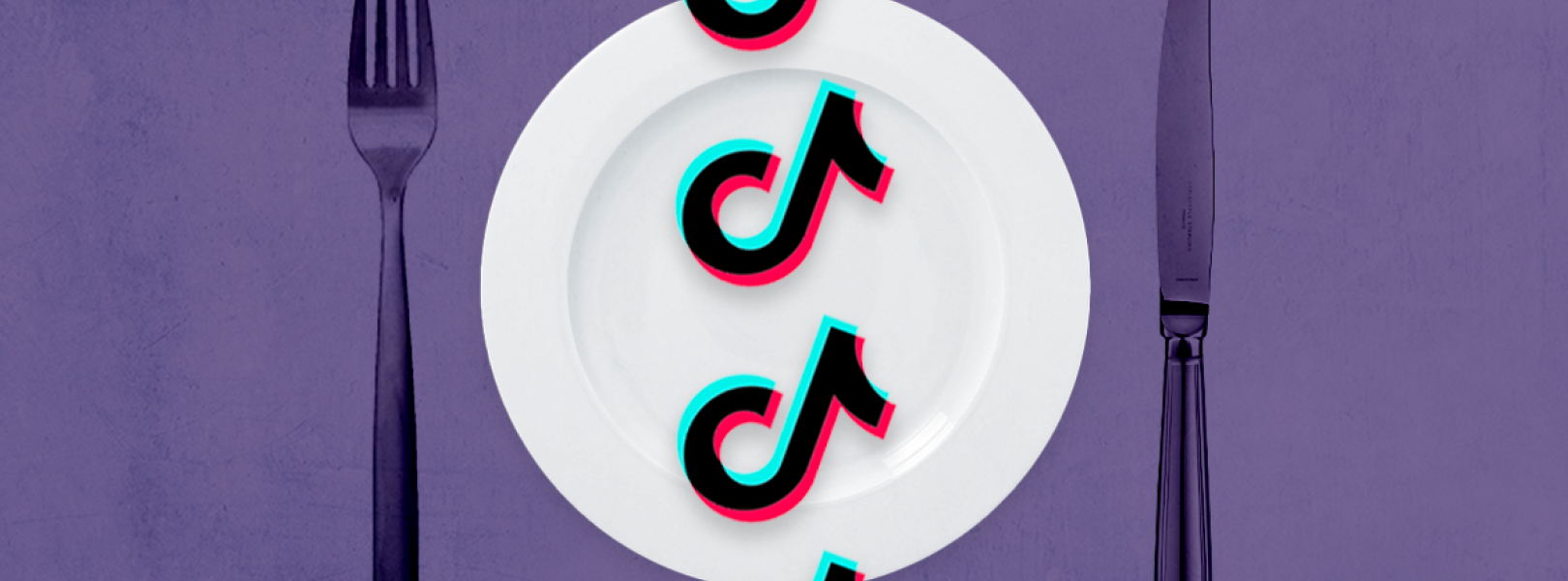The National Eating Disorder Association's website, screening tool, and 24/7 crisis support via text (send NEDA to 741-741) are free resources available for those who need support and treatment options.
TikTok propelled our account into a pro-eating disorder void
Written by Olivia Little
Published
Despite TikTok’s ban of #SkinnyTok, which was often affiliated with harmful content that promoted extreme thinness, the company’s own recommendation algorithm still seems to be feeding users pro-eating disorder content. We know, because it happened to our account.
Media Matters created a new TikTok account and searched for a variety of weight loss-related phrases, such as “how to lose weight,” “weight loss workouts,” and “fast weight loss.” Our For You Page (FYP) was filled within a few days with pro-eating disorder content that seemed to be targeted at young women and girls.
Every example documented in this report was fed to our account’s FYP, including dangerously restrictive “what I eat in a day” videos and content promoting starvation
Users in communities on TikTok that promote anorexia are posting “what I eat in a day” (WIEIAD) videos that often display alarmingly low calorie totals, as well as visual documentation of what the user consumed throughout the day. Some users commented on such posts, asking for tips or praising the creator for their “discipline.”
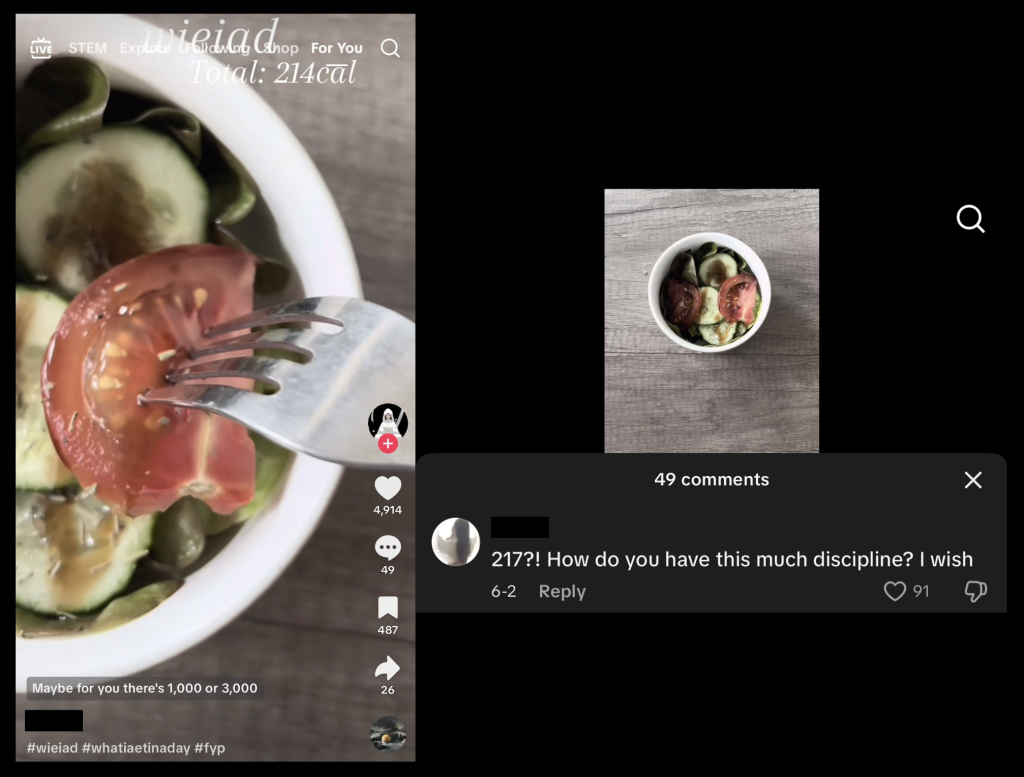
Our FYP was flooded with these dangerously restrictive WIEIAD videos. For example, one user posted a WIEIAD video showing that they had consumed only 13 calories from a Monster energy drink; the comments applauded their “self control.”
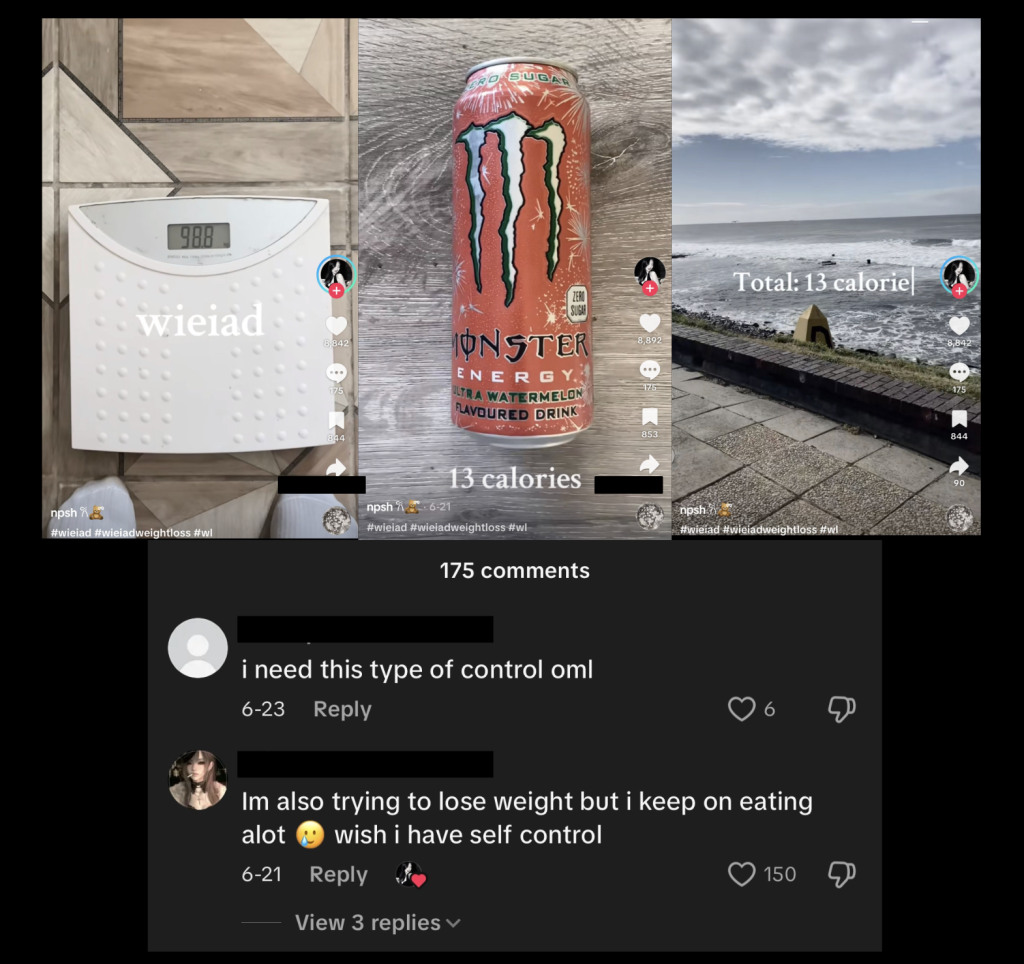
Another WIEIAD video with over 30,000 likes showed foods that added up to only 204 calories.
Our account was also fed a number of “motivational” videos about weight loss, typically displaying thin women or fantasizing about losing weight. We were served videos of very thin women with overlaid text reading, “are you still hungry??”
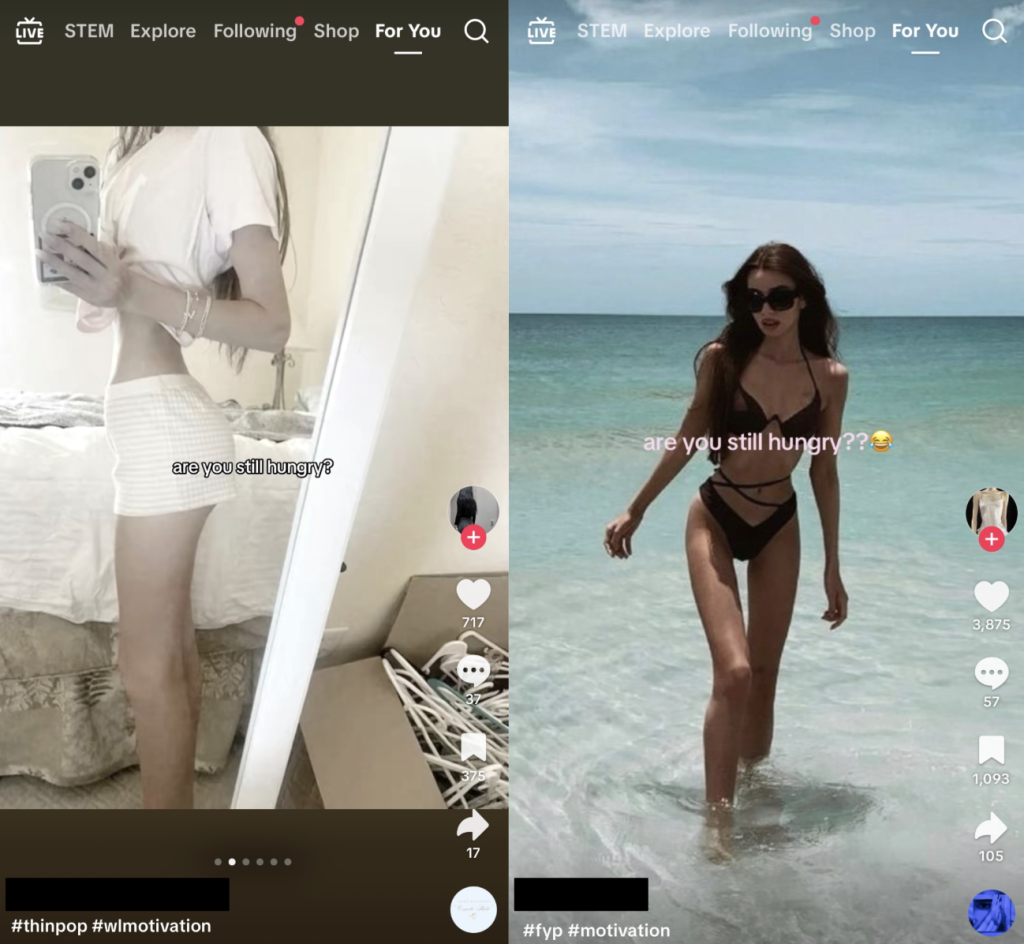
We also encountered “harsh motivation” slide shows with phrases like, “Still eating? Then stop dreaming.”
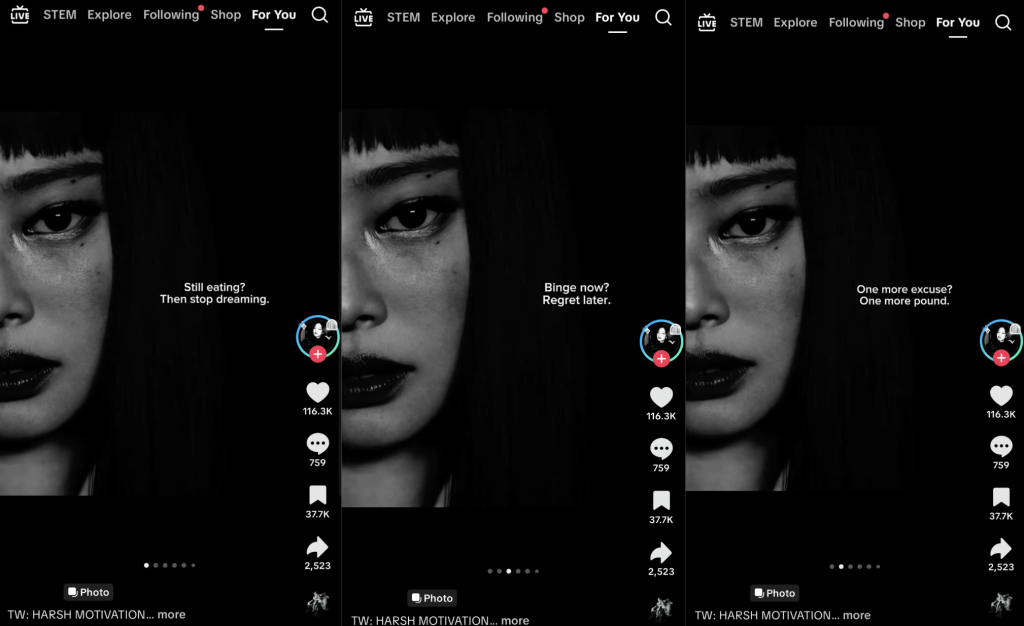
Other content romanticized side effects of not eating, like dizziness.
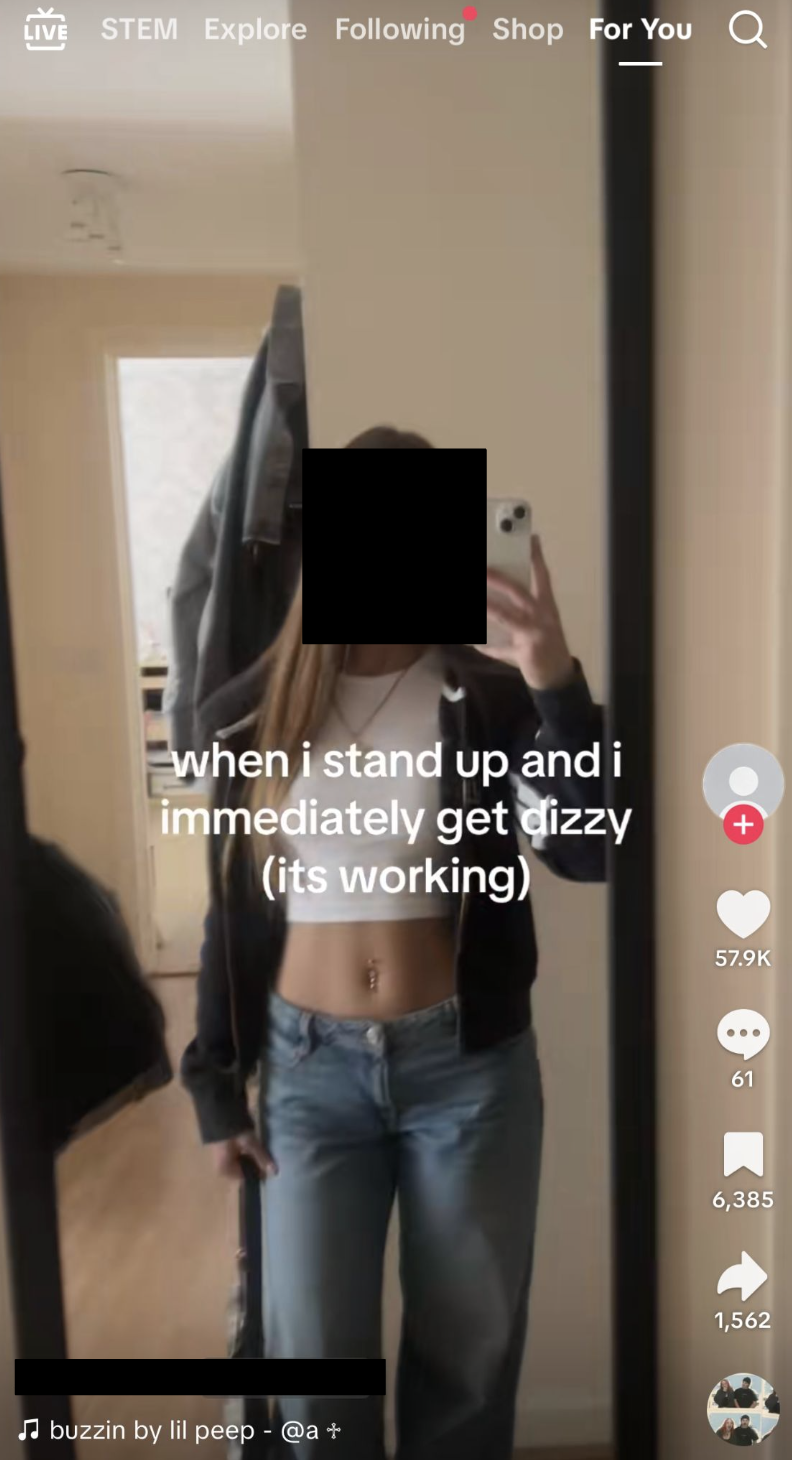
One user asked for weight loss “partners,” overlaying text of the request over what looks like an image of a hospital room. The caption reads, “please? ill be posting wieiad.”
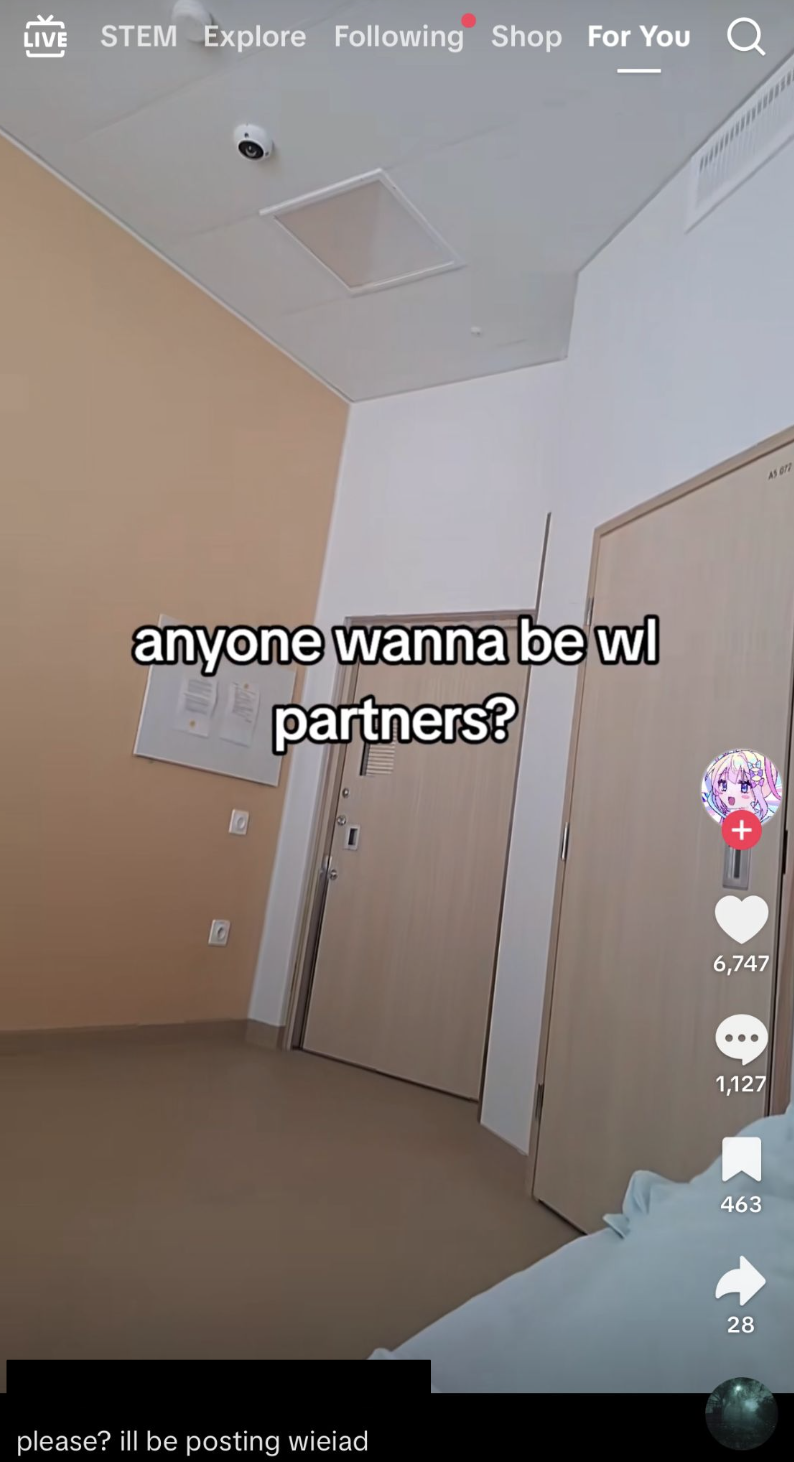
That video has over 1,127 comments, with many users saying they want to join.
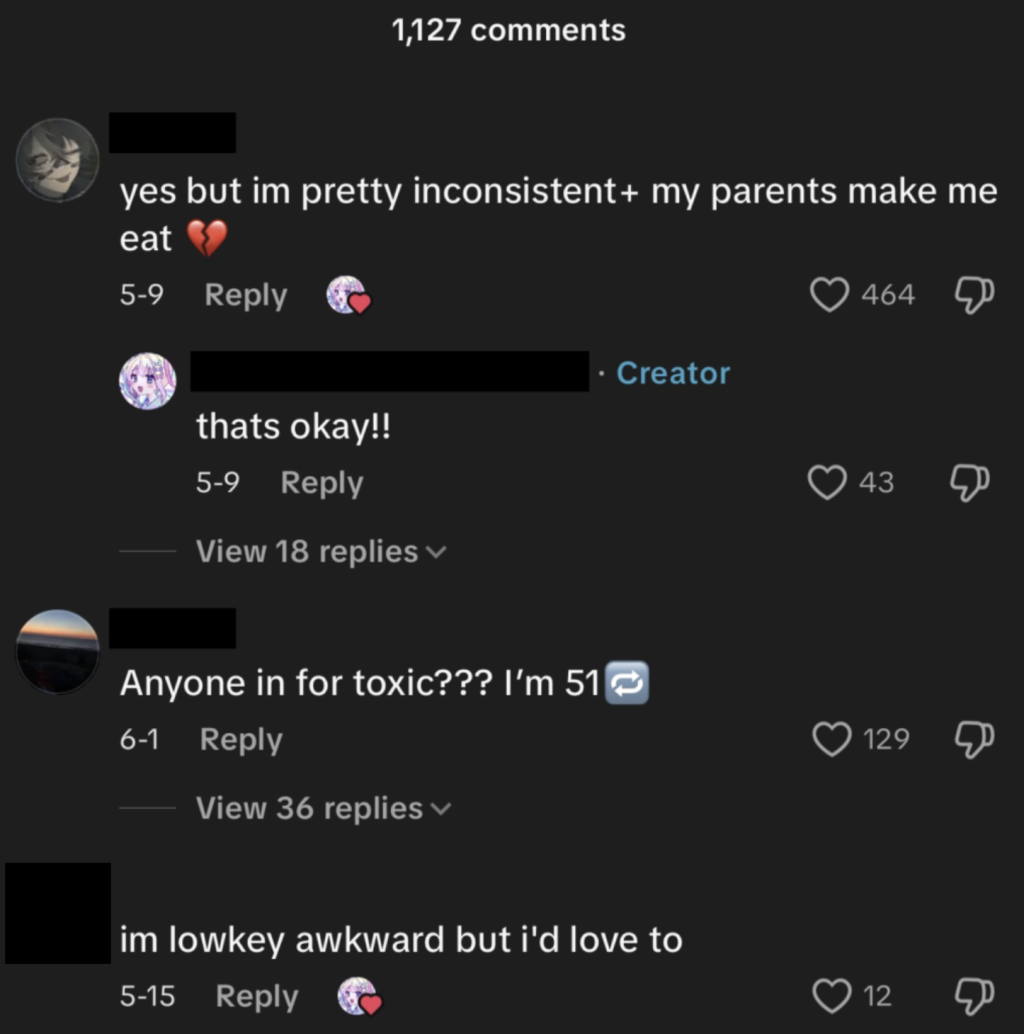
Research has shown the dangers of consumer eating disorder-focused social media content, particularly to young women and girls.
According to an analysis of websites promoting disordered eating published in 2010 by the American Journal of Public Health, “The high prevalence of interaction opportunities in the pro-eating disorder community has the potential to be extremely harmful if viewers are learning dangerous behaviors from one another, particularly if they are similar in age and gender.”
Even more worrying, it suggests that “discussing techniques and perceived benefits may also have contagious effects on those not yet committed to the behaviors.”
There is no denying the danger of pro-eating disorder content directly delivered to a vulnerable audience. And because TikTok’s algorithm is hyper-tailored to the user, those who could be vulnerable to disordered eating content don’t even have to seek it out because they are likely to have it delivered right to their feed.
